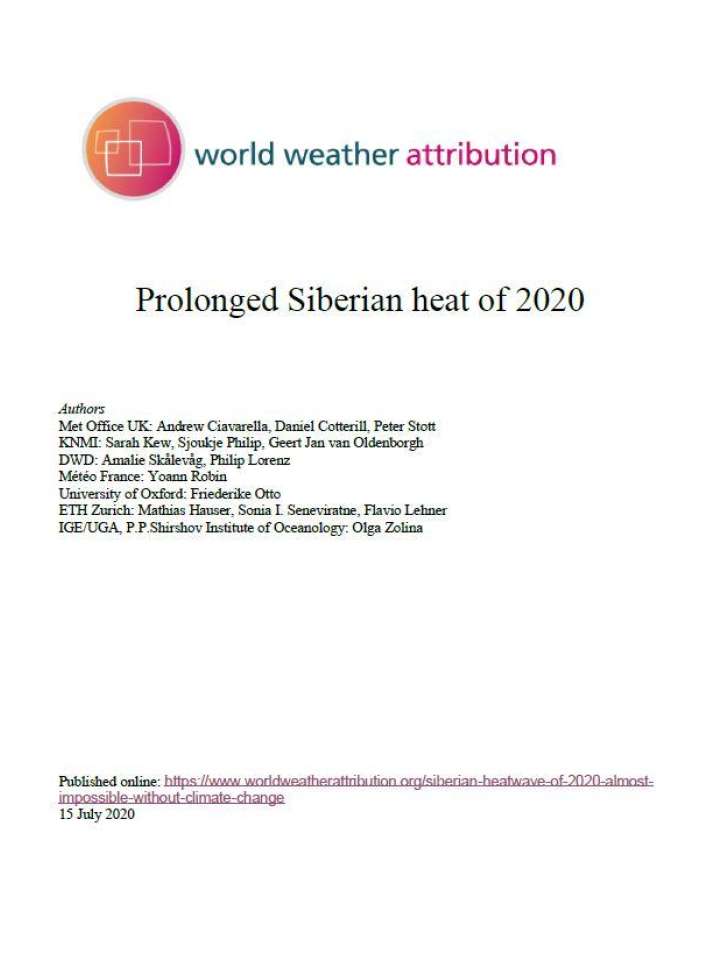Prolonged Siberian heat of 2020
The present report investigates the role of human-induced climate change in the likelihood and intensity of both of these events: a) the persistent warm anomalies across the Siberian region (60–75ºN, 60–180ºE) from January to June 2020, and b) the reported record temperature of 38°C at Verkhoyansk (67.55ºN, 133.38ºE) on June 20. Both of these event definitions are chosen primarily to relate to the impacts of extreme heat.
This report indicates with high confidence that extremely warm periods such as the 6 months of January -June 2020 over the Siberian region would have been at least 2 °C cooler in a world without human influence. Similar events have a best estimate return time in the current climate of around 130 years and are now more than 600 times as likely to occur as they would have been at the beginning of the 20th century; with the best estimate orders of magnitude larger.
By 2050 the authors expect such a regional warm period in the first 6 months of the year to be at least another 0.5 °C warmer, and possibly up to 5 °C warmer, with similar 6-month regional temperatures becoming correspondingly more frequent. Results also indicate a large increase in the likelihood of such temperatures and, with more confidence, an increase in extreme daily maxima of more than 1 °C when comparing the climate of 1900 to the present day.
Explore further
